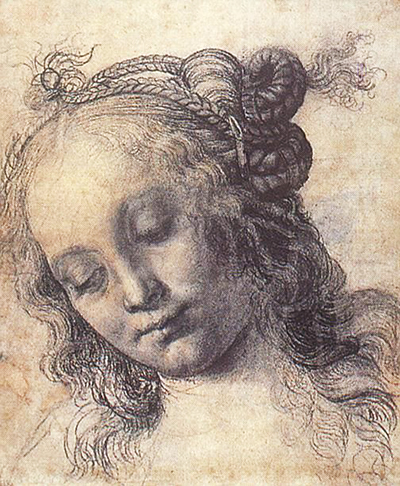Head of a Woman with an Elaborate Hairstyle is the most famous drawing of all those produced by Italian artist Andrea del Verrocchio
This draughtsman practiced his female portraits using charcoal and chalk and would regularly pass his sketches around his studio in order to encourage his pupils to follow a similar style. White heightening would often be used to add further contrast between different elements of the portrait and complete more of a three-dimensional finish.
Head of a Woman with an Elaborate Hairstyle is a double sided artwork, often termed as recto and verso. On the opposing side is a similar drawing that follows the same layout but if far briefer. Perhaps the artist started there and then reverted to this side when he was more confident in how he was composing the piece. This work is owned by the British Museum in London as part of one of the world's finest collections of Renaissance drawings.
This drawing is dated at circa 1475 and has been confidently attributed to Verrocchio which has not been the case with many of his paintings and sculptures. He would use both chalk and charcoal in this medium, often viewing the latter as more suited to his gradiented style where different areas of the composition are smoothly blended together.
There is has been some discussion about whether this artwork was once owned by Giorgio Vasari, a prominent Renaissance painter who produced a comprehensive biography of the entire movement that many still refer to today. This piece made it into his list of the artist's work, where he specifically mentioned the female portraits with elaborate hair. He then drew comparisons between it and work by Verrocchio's pupils Lorenzo di Credi and Da Vinci.




